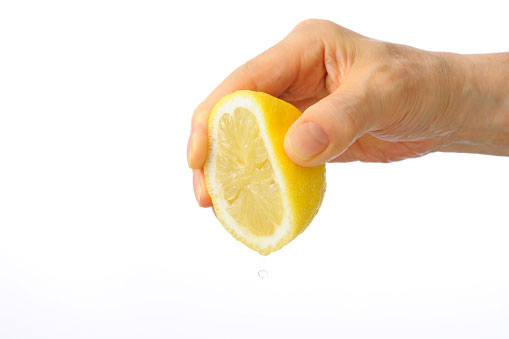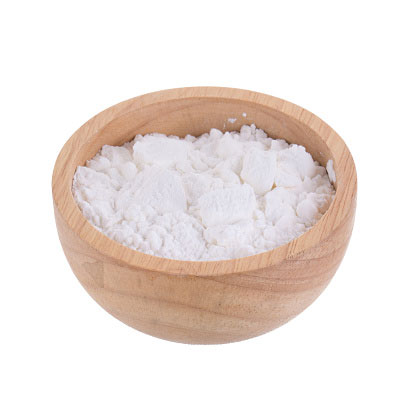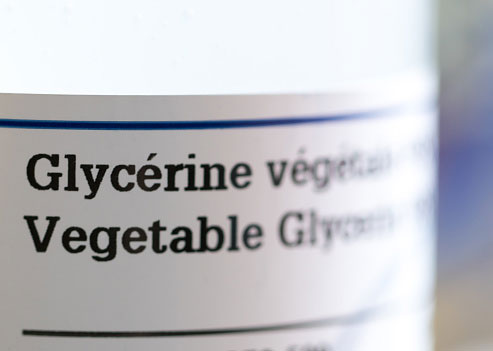My grandma owns this big turmeric mortar and pestle, and I have always loved using and cleaning it. One day, she ground turmeric in the mortar and pestle and all hell was let loose. The ash color granite mortar and pestle were stained yellow. Washing it with water and non-smelly dishwashing soup didn’t seem to be able to get the color out.
Well, not until I did research on how to remove the turmeric color from our granite mortar and pestle. I am sure a lot of mortar and pestle users will be having this same struggle and I know this post will help you out.
Turmeric is a really great spice with a lot of benefits and it has become quite known in healthy cooking. While the main component of this spice curcumin which is also the active ingredient gives turmeric its yellow color, it is also usually used for coloring foods and other things are good.
But although it has many awesome properties, you could put it that turmeric also has a downside in that it stains almost anything it comes in contact with, from the countertop, marble, wood, plastic, glass, so much more, and even most times stainless steel.
A lot of people would not necessarily consider this good at all for their mortars and pestle as turmeric pretty much stains it too.
Some might suggest leaving the stain as it might not affect the flavor of any future mixture you grind on the mortar with the pestle but that is not why we are here because we would want to remove the stains on the mortar and pestle completely or almost any possible way without also ruining the mortar or pestle (whichever material it may be).
Turmeric stains are really tough to remove and the faster you act to remove them, the better the results would be. Turmeric in its powder form does not really stain and can be easily brushed off or wiped off but when it is mixed with a liquid, that is when it stains badly
Before showing the different steps on how to remove turmeric stains from mortar and pestle, it is important to note that cleaning and removing the stains from the mortar and pestle will solely depend on the material of the mortar and pestle.
These are some much-known variety of material of mortar and pestle; marble mortar and pestle, ceramic mortar and pestle, wood mortar and pestle, glass mortar and pestle, granite mortar and pestle, cast iron mortar and pestle, Japanese earthenware mortar and pestle, volcanic rock /basalt mortar and pestle etc.
First and foremost, after grinding turmeric, you would want to proceed to remove the excess turmeric from the mortar and pestle if there is any before doing anything. This can be done by gently brushing it off or just wiping it with a towel.
The mortar and pestle should be clean before trying any of the methods for turmeric color removal that I will be showing. If your mortar and pestle are already cleaned then proceed to the methods of stain removal.
When removing the turmeric stains from the mortar and pestle or just cleaning your mortar and pestle in general, soap should not be used to clean the mortar and pestle. In general, when cleaning stone mortar and pestle made from granite, marble, or larva stone, the use of warm water and rice does the work.
For the cleaning of metal (brass, iron, and alloy) mortar and pestle, glass mortar and pestle, ceramic mortar and pestle, warm water and a rough scrub brush should be used. While in the case of bamboo mortar and pestle and wooden mortar and pestle, damp cloth to wipe the mortar and pestle clean will do just the work as soaking in water will ruin the wood.
This is just a general way of cleaning the different materials, if you are still not sure of how best to clean the type of material of your mortar and pestle and you are confused, research more or try and consult your owner’s manual of the mortar and pestle to know what not to use on them and how best to clean them.
Table of Contents
Method one: Put the mortar and pestle out in the sun

The sun plays a big role in removing the stains. At this point you might be wondering how that is even possible and how the sun contributes to removing the stain, I will explain.
The component of turmeric, curcumin which also is the color compound that gives turmeric the yellowish color is broken down by ultraviolet light.
The sun also makes excellent bleach. When the mortar and pestle are left outside in direct sunlight (it should not be kept where the sunlight would be going through a glass window), it is enough to get rid of the satins.
Here is a proper way to do that:
- Depending on the type of mortar and pestle, clean the mortar and pestle either by using water, brushing off the spice, or wiping with a clean cloth or a damp cloth then let it dry out.
- Take the mortar and pestle and place it in direct sunlight or even a sunlamp for a period of time.
- The longer the mortar and pestle are left under the sun, the more the color of the turmeric will fade.
- When the color fades, take the mortar and pestle inside and store.
Method two: Using lemon juice to remove the turmeric color

In case you are not aware, lemon juice is a bleaching and whitening agent and it has been used as a natural stain remover for a lot of things. It removes the substance causing stains while also disinfecting the mortar and pestle.
An added tip if you own a wooden mortar and pestle, lemon can also be used as a polisher.
How to use the lemon juice to remove the turmeric color from the mortar and pestle:
- Get your lemon and cut it in half and depending on how best you prefer, either rub the cut lemon all over the stained area in the mortar and pestle or squeeze out the juice of the lemon and rub it all over the mortar and pestle.
- Allow the lemon juice to soak on the mortar and pestle for a period of time or till the lemon juice dries up. Rinse the lemon juice out of the mortar and pestle or wipe with a damp cloth.
- You can repeat this process again if it does not completely remove the color the first time. Let the mortar and pestle completely dry before storing it away.
Method three: Use vinegar to remove the turmeric color

Vinegar as it is commonly known is also called acetic acid and it is a weak acid. Although it is a weak acid, it is still an acid nevertheless. Vinegar is capable of dissolving stains.
Turmeric is a natural color indicator and vinegar can remove the stains. For more effective removal of the stain, you might want to combine the vinegar with baking soda which is a base. Their combination will remove the stain quickly.
Follow these steps to quickly get rid of the stain from the mortar and pestle:
- Get the mortar and pestle and put vinegar on it and let it soak. The vinegar should be soaked on the mortar and pestle for a day or two.
- Scrub the mortar and pestle and if the color of the turmeric still remains, repeat the process and this time allow the vinegar to soak and sit for longer periods.
- If doing this still does not remove the stains completely, try adding a little pinch of baking soda in the mortar and pestle or first mixing the baking soda with the vinegar and then applying it to the mortar and pestle. That should do the work.
A little something to note is that as vinegar is acidic even if it is a weak one, using any kind of acid on granite is not really a good idea as the acid will etch the surface of the granite mortar and pestle. If you have a granite mortar and pestle, please resort to using other methods that are listed.
Method four: Use baking soda to remove the turmeric color

Baking soda is known to remove even the toughest of stains so getting rid of the turmeric color from the mortar and pestle is not a problem at all. While removing the stains on the mortar and pestle, the baking soda will also help remove unwanted smells that might be lingering on the mortar and pestle. The stain by the turmeric does not stand a chance against baking soda.
Follow these steps listed below to use baking soda in removing the color on your mortar and pestle from the turmeric:
- Before doing anything, clean the mortar and pestle making sure it is thorough either by using water, wiping it with a cloth, or wiping it with a damp cloth. When this is done proceed to the next step
- A paste will be made with the baking soda by either mixing the baking soda with lemon juice or mixing the baking soda with water.
- Use the paste and apply it on the mortar and pestle. Let the paste sit on the mortar and pestle for an hour to two hours or even more.
- After the time has passed, Scrub the mortar and pestle gently and then proceed to wash or wipe out the baking soda, the color of the turmeric should have been gone. Leave the mortar and pestle out to dry completely.
To ensure that the mortar and pestle are completely clean, a tiny pint of dish soap can be used when washing it after the use of baking soda. But with that said, still, check your mortar and pestle owner’s manual.
Method five: Remove the turmeric stain using corn starch

Corn starch is used to clean almost any stain. Long before cleaning products were used, it was what did the job. Corn starch is a carbohydrate in a powdery form which is made by extraction from corn.
It then becomes processed and with just a little sponge, water and cornstarch, the turmeric color will be gone. Just like baking soda, corn starch also deals with any unwanted smell.
- Mix two parts of corn starch with one part of water and this makes a non-abrasive scrub.
- Get the mortar and pestle and firstly clean it then take the corn starch scrub and using a soft sponge gently scrub the mortar and pestle.
- When you are done scrubbing, allow the corn starch to sit for some time, and then proceeding to wash it off or wipe it off the mortar and pestle with a clean or damp towel. Let the mortar and pestle air dry well before storing it.
Method six: Use toothpaste for the turmeric stain removal

Now you are probably wondering “toothpaste too”. Apart from keeping your dentition clean, toothpaste has other uses as well. The best type of toothpaste that works best is the white-colored opaque ones.
If you are interested in knowing how to use the toothpaste to remove the turmeric stain, the steps below will tell you
- Get the mortar and pestle and apply a generous amount of toothpaste to the turmeric stain.
- Scrub the mortar and pestle gently and let the toothpaste sit for a while.
- Wash the toothpaste from the mortar and pestle or in the case of a wooden mortar and pestle, clean the toothpaste out with a damp cloth.
- Let the mortar and pestle completely dry out then store it.
Toothpaste contains low concentrations of hydrogen peroxide. Hydrogen peroxide is non-toxic and can be used also instead of toothpaste. When using the hydrogen peroxide, sprinkle the mortar and pestle with baking soda and then mix a half cup of hydrogen peroxide along with two cups of cool water.
Spray the mixture onto the baking soda on the mortar and pestle and scrub gently using a soft bristle brush. This mixture should be used fresh each time as the hydrogen peroxide when exposed to light turns to pure water.
Method seven: You can also use glycerin to remove turmeric color

Glycerin is a type of alcohol that is colorless and thick and it is also hygroscopic (this simply means that glycerin absorbs moisture from the air). many things dissolve easily into it as glycerin is a very good solvent. All this quality makes it good for removing stains as it softens the stains. Even old stains do not stand a chance.
How to use:
- Take some rice and a tiny bit of water on the mortar and pestle and grind. clean it of
- Apply the glycerin and wipe it on the turmeric stain on the mortar and pestle in a circular motion for ten to fifteen minutes.
- Wipe the mortar and pestle out with a damp cloth or wash it off with water and if you want you can add a tiny pint of dish soap. Let the mortar and pestle dry.
Any of these methods shown above should help get rid of the turmeric color on the mortar and pestle.
Try any of these and let me know how it goes.
